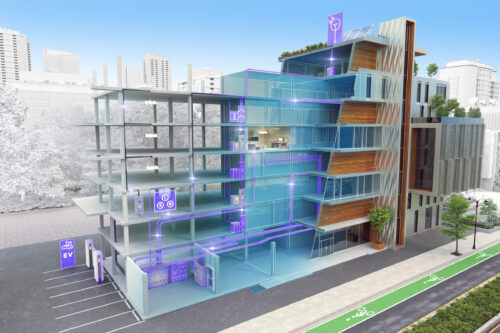Arc-Flash Compliance for Industrial Facilities and Beyond
At the National Manufacturing Week show in suburban Chicago last month, worker safety, not surprisingly, was the subject of a great amount of discussion, not only in various sessions but also on the exhibit floor. Arc flash, and adherence to NFPA 70E, part of the National Electric Code, was, of course, a subset of this discussion, but in a disturbing sort of way.
“A big question we keep getting is ‘Do we have to do this?'” said Doug Mleczko with Des Plaines, Ill.-based fuse manufacturer Littelfuse.
Despite adoption by OSHA, and a definitive warning by the agency that it will come down on plant and building operators in violation of NFPA 70E’s requirements, the reality, according to Mleczko, is that many still view this as an optional guideline.
The other key issue, he said, is that many plant operators, frankly, don’t know how to go about complying with the standard. At the show, Littelfuse was giving away arc-flash incidence calculators and promoting its educational offerings in this area. In fact, Mleczko said they’ve launched a line of services to address this issue alone.
For the record, NFPA 70E requires the following on all electrical equipment 50 volts or higher:
-
A safety program with defined responsibilities
-
Analysis for degree of potential arc-flashhazard including a one-line diagram, short-circuit analysis and updated coordination analysis
-
Training for workers
-
Personal protective clothing equipment for workers
-
Tools for safe work
-
Warning labels on equipment
Palatine, Ill.-based electrical manufacturer Square D is another vendor that’s taking this issue very seriously. Like Littelfuse, they also offer a number of educational programs on the subject and have gone to extra lengths on the labeling side as far as their equipment is concerned.
But according to Joe Weigel with Square D’s Services Group in Nashville, Tenn., the issue goes well beyond educating plant managers. Consulting engineers, he argued, also need to get up to speed.
“Clients rely on consulting engineers to be experts on the current codes and standards affecting electrical system design,” said Weigel. “Most consultants are very knowledgeable in this area, but design practices for minimum arc-flash potential have not yet been defined in the standards.”
Weigel went on to say that, in fact, the practices commonly used today are bad. Engineers have to be aware of the potential legal consequences of their current practices.
This applies equally to projects away from the plant floor, he said. It’s just as critical for engineers to consider the consequences of this electrical phenomenon in brand-new electrical rooms and even state-of-the-art data centers.
“I was on a tour of a data center that had brand-new, beautiful-looking switchgear, but I could see instantly that they had a high incident energy level on the low-voltage side,” said Weigel.
That said, there are communication opportunities that exist now, where, he said, practices can be changed to promote safer working environments—particularly when new equipment is designed.
Weigel offered these 11 suggestions:
-
Specify hinged doors on equipment, including switchgear, switchboards and panel-board fronts.
-
Keep in mind that the “six-disconnect” rule is no longer acceptable. It’s always “Hazardous FR.”
-
Specify instantaneous trip unit function on all feeder breakers.
-
Specify LVDO switchgear with doors that remain closed when racking breakers.
-
Use molded-case circuit and our C.L. fuses at 400 amps and below.
-
Add arc-flash analysis to short-circuit and coordination-study specifications.
-
Specify engineering controls that can reduce arc-flash hazard, such as re-mote racking (MV), arc terminator (MV), HVIR Windows and Masterpact low-arc flash circuit breakers (LV).
-
Specify differential protection schemes on MV equipment where appropriate.
-
Specify barriers in switchgear (which helps to limit arcing fault propagation).
-
Avoid using large fuses equal to or greater than 1,600 amps as primary OCPDs.
-
Get accurate fault current data from the utility (not infinite bus assumption).
UL 508-8
Engineers also need to be aware of another code issue that could have similar effects to 70E. Underwriters Laboratory is now mandating a new short-circuit current-rating labeling requirement for panel boards and for lighting control panels.
According to Square D’s Paul Havlik, the new standard, 508-8, goes into effect this month, with 26 states adopting it in their respective codes.
In a nutshell, these current labels will dictate whether personnel must don protective gear when servicing equipment similar to arc-flash conditions.
But beyond this, it affects the engineer in decisions about using fuses or circuit breakers to establish degrees of short-circuit ratings.
For more on this standard go to www.squared-controlpanel.com/contpanlhome.htm , including a link to register for a May 17 webcast on this subject from our sister publication Control Engineering.
Cable do’s and dont’s
Finally, from National Manufacturing Week, some code-related news about grounding and fill ratios for cable trays: According to Bob Crain, vice president of engineering for Cablofil, Mascoutah, Ill., an issue engineers need to be more cognizant of is the fill ratios of cable tray. While it does includes tables for conduit, the NEC does not address fill ratios for cable, which can lead to trouble. In general, he said, 50% is a good rule of thumb.
Engineers also need to make sure cable trays are properly shielded and grounded. “You can gain attenuation reduction if a tray is well grounded,” said Crain.
While contractors do a bulk of the installing and some specification, it’s also the consulting engineer or communication specialist’s responsibility to make sure cables are properly terminated and that trays have the right bend radius.
Do you have experience and expertise with the topics mentioned in this content? You should consider contributing to our CFE Media editorial team and getting the recognition you and your company deserve. Click here to start this process.





